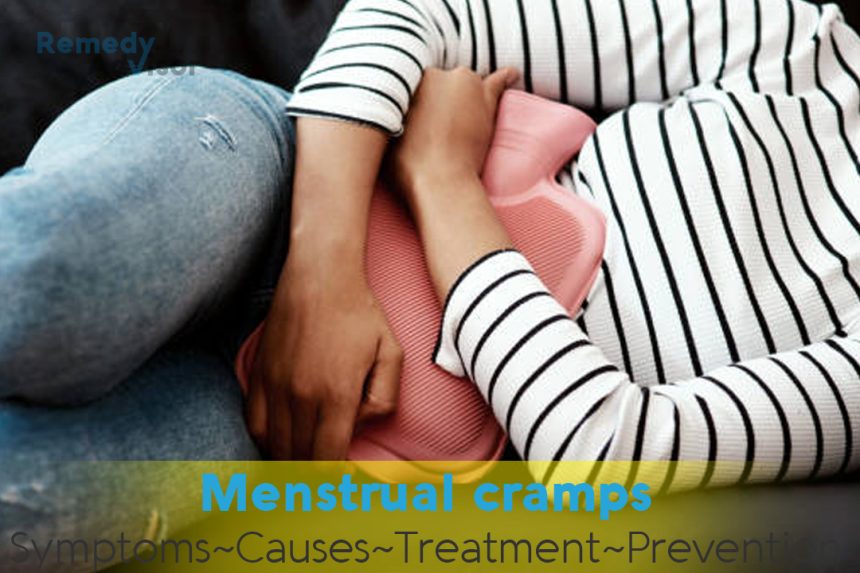What is it
For most women, menstruation creates no medical problems: even the most uncomfortable symptoms are not permanent, nor do they usually indicate any serious underlying condition. But for some women the pain is severe enough to interfere with everyday activities.
The Greek-derived word dysmenorrhea, meaning painful menstrual flow, is a term for what most women call cramps. Besides pain in the lower abdomen or back, women may also experience nausea, diarrhea, vomiting, jumpiness, and occasional headaches. When it occurs, pain always comes at the beginning of a menstrual period and may last up to three days. It chiefly affects women 25 years of age and under; for reasons not well understood, dysmenorrhea tends to vanish as women grow older, especially after the birth of a child. However, for some it can continue until menopause.
Symptoms
Irregular, sharp, cramping pain in the uterus, lower abdomen, or lower back, sometimes with pain that shoots down the thighs.
- Backache, nausea, vomiting, or diarrhea.
- Hot and cold sensations.
- Fatigue.
- Occasional headache.
- May or may not be accompanied by PMS (premenstrual syndrome).
What causes it
Although it can cause emotional distress, dysmenorrhea is not psychological in origin. The discomfort comes from uterine spasms, which are most powerful at this time and temporarily deprive the uterus of oxygen. These spasms are triggered by prostaglandins, hormone like substances that the body sometimes releases in excess during menstruation. The high level of progesterone is what triggers the prostaglandins. Thus, cramps are a fairly sure sign that ovulation has taken place.
In some instances painful menstruation may also be the result of an underlying gynecological disorder, such as uterine fibroids, pelvic inflammatory disease, a pelvic tumor, or endometriosis.
What if you do nothing
For most women, cramps are not severe and vanish within a day or two of the start of the menstrual cycle. Home remedies can help provide relief If cramps are incapacitating, you should seek treatment from your doctor.
Home remedies
For centuries women have relied on home cures for cramps hot drinks, massage, stretching exercises, keeping warm. No specific exercise for relieving dysmenorrhea exists, and there is no scientific evidence that any of the old tried-and- true remedies really work. Yet personal experience cannot be discounted: different things work (or don’t work) for different people. Here are some common self-help measures.
Take a bath
The hot water may help relax the uterus.
Apply heat
Placing a heating pad or hot water bottle on the lower abdomen may relieve the discomfort of cramps.
Exercise several times daily
Walking, swimming, running, bicycling, and other aerobic activities may help diminish cramping symptoms by inhibiting prostaglandin release and contributing to the release of endorphins, the body’s own natural pain relievers.
Take a pain reliever
Acetaminophen may be effective in relieving the mild to moderate headache and the backache that often accompany menstrual cramps. Researchers aren’t sure if acetaminophen affects prostaglandin production, but if it does, it is a milder drug than NSAIDs (aspirin, ibuprofen, or naproxen), which are also effective. Take the drug according to label directions.
If acetaminophen doesn’t provide relief, you may want to try one of the NSAIDs, which suppress prostaglandins.
If you usually have menstrual cramps, you may want to begin taking an NSAID (as an anti-prostaglandin) the day before you expect a period and to continue for a day or two. The medication may help relieve pain by decreasing the severity of uterine contractions. People respond differently to each medication, so you may need to try different types to find one that works best for you.
Avoid caffeine
Foods and beverages such as coffee and tea, chocolate, and soda may intensify cramping.
Prevention
Get plenty of rest. If you find that you are prone to regular cramping during menstruation and you become unusually tired or nervous, napping occasionally during the day and maintaining regular sleeping patterns may prevent or help reduce the severity of cramping.







